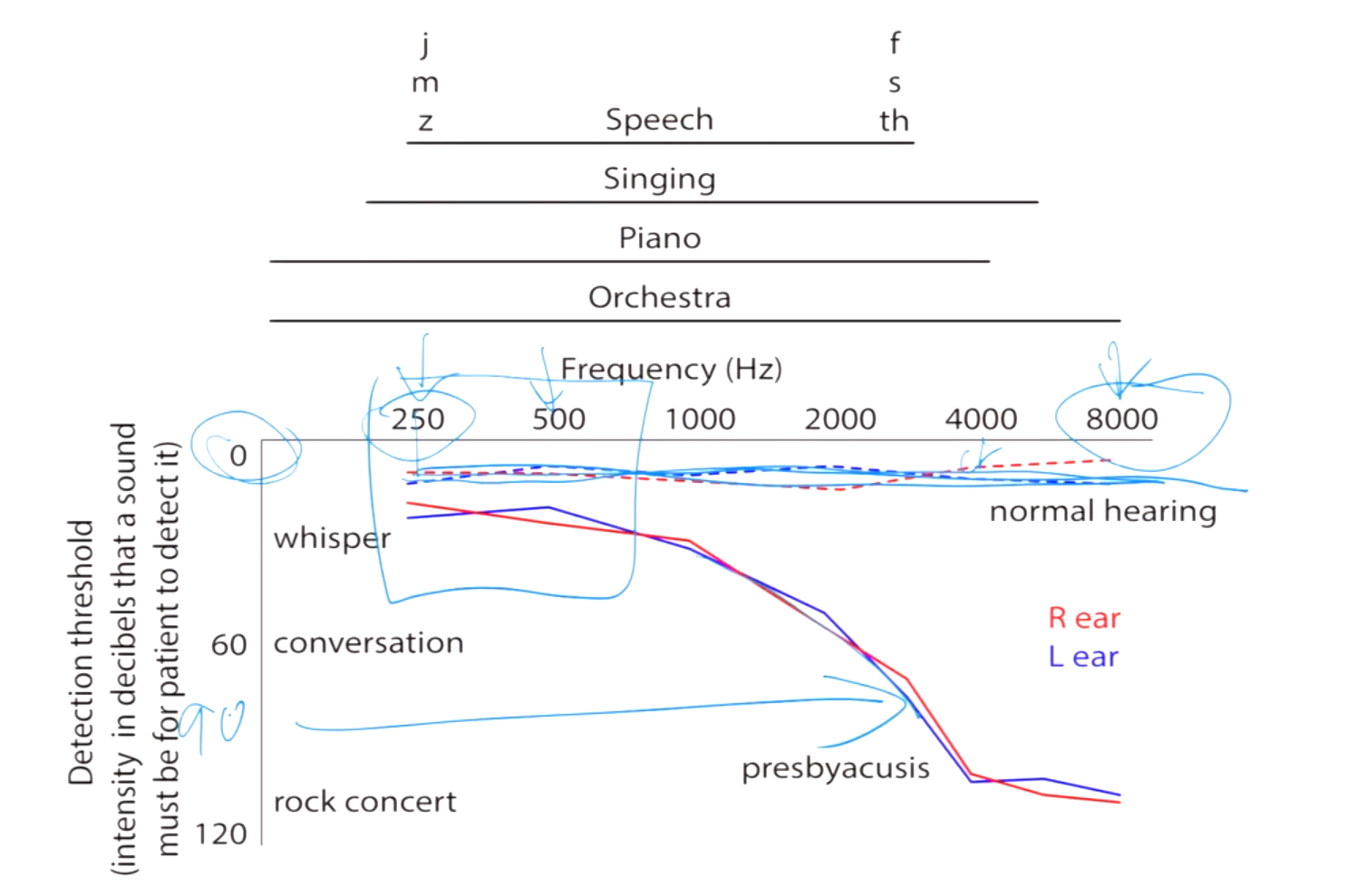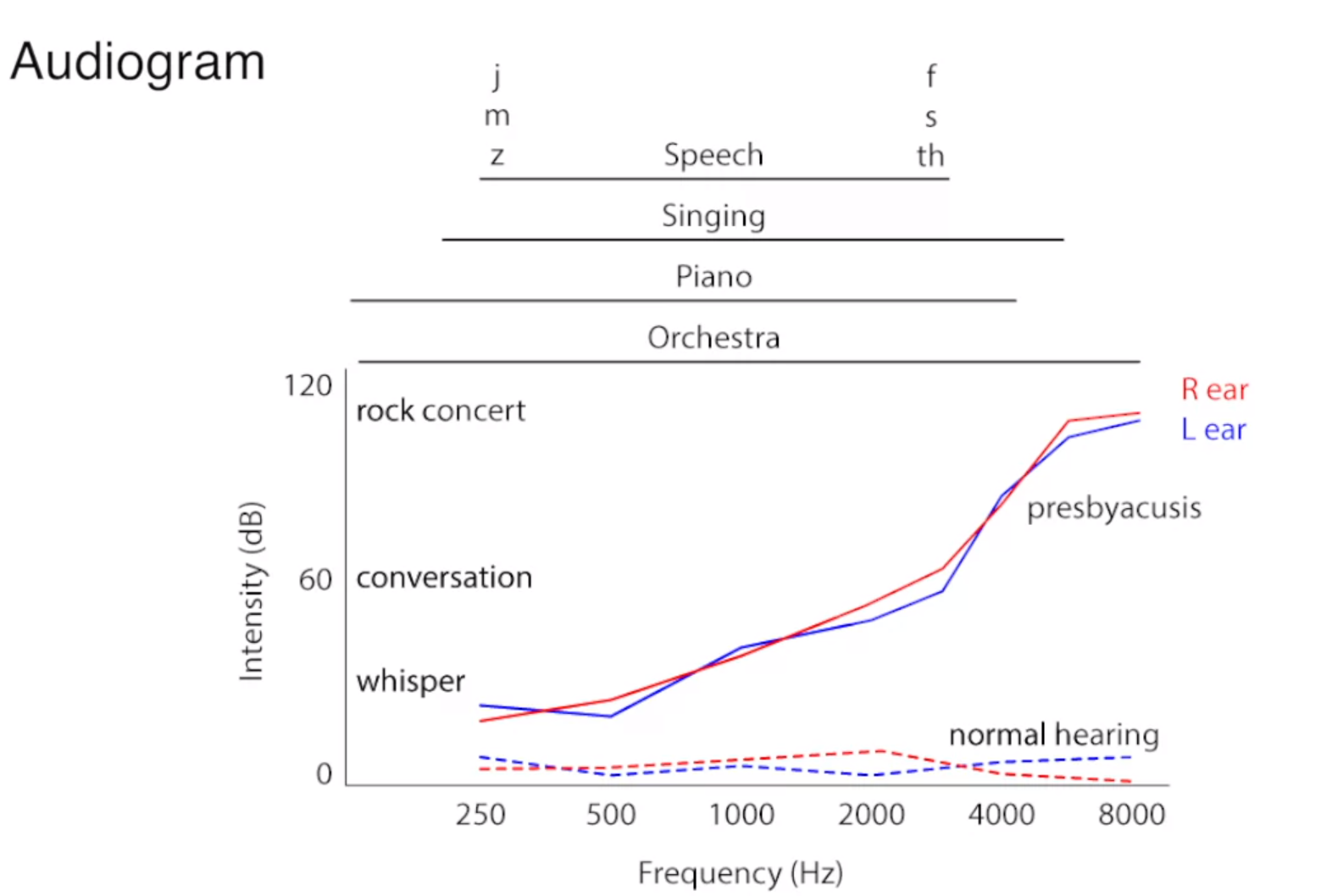I. How Common is Hearing Loss?
- Hearing loss and deafness are surprisingly common, affecting up to 5% of the world’s population.
II. Causes of Hearing Loss
- Congenital Deafness:
- Caused by mutations in genes responsible for the intricate structure of the inner ear.
- Examples: molecules for cochlear fluid, hair cell function etc.
- Any mutation affecting these can lead to deafness or severe hearing impairment.
- Medications:
- Certain chemotherapeutic drugs and antibiotics can be toxic to hair cells, causing hearing loss.
III. Presbyacusis (Age-Related Hearing Loss)
- Most common cause of hearing loss in adults.
- Caused by:
- Loss of outer hair cells in the cochlea.
- Inner hair cells (responsible for transmitting information to the brain) remain relatively intact.
- This loss disrupts the cochlear amplifier, leading to significant hearing difficulties.
- Contributing factors:
- Exposure to loud noises over time.
IV. Impact of Presbyacusis
-
Hearing loss at high frequencies first.
-
Speech becomes difficult to understand, especially sounds like “f,” “s,” and “th.”
-
Difficulty following conversations, particularly in noisy environments.
 V. Demonstration of Presbyacusis on Audiogram
V. Demonstration of Presbyacusis on Audiogram -
Normal hearing threshold: 0 decibels across most frequencies.
-
Presbyacusis: Relatively normal hearing at low frequencies, but significantly elevated thresholds (requiring much louder sounds) at high frequencies.
-
High-frequency sounds crucial for understanding speech are most affected.
VI. Progression of Presbyacusis
- Over time, hearing loss can progress to lower and lower frequencies.
- This can lead to severe hearing impairment in older adults.
